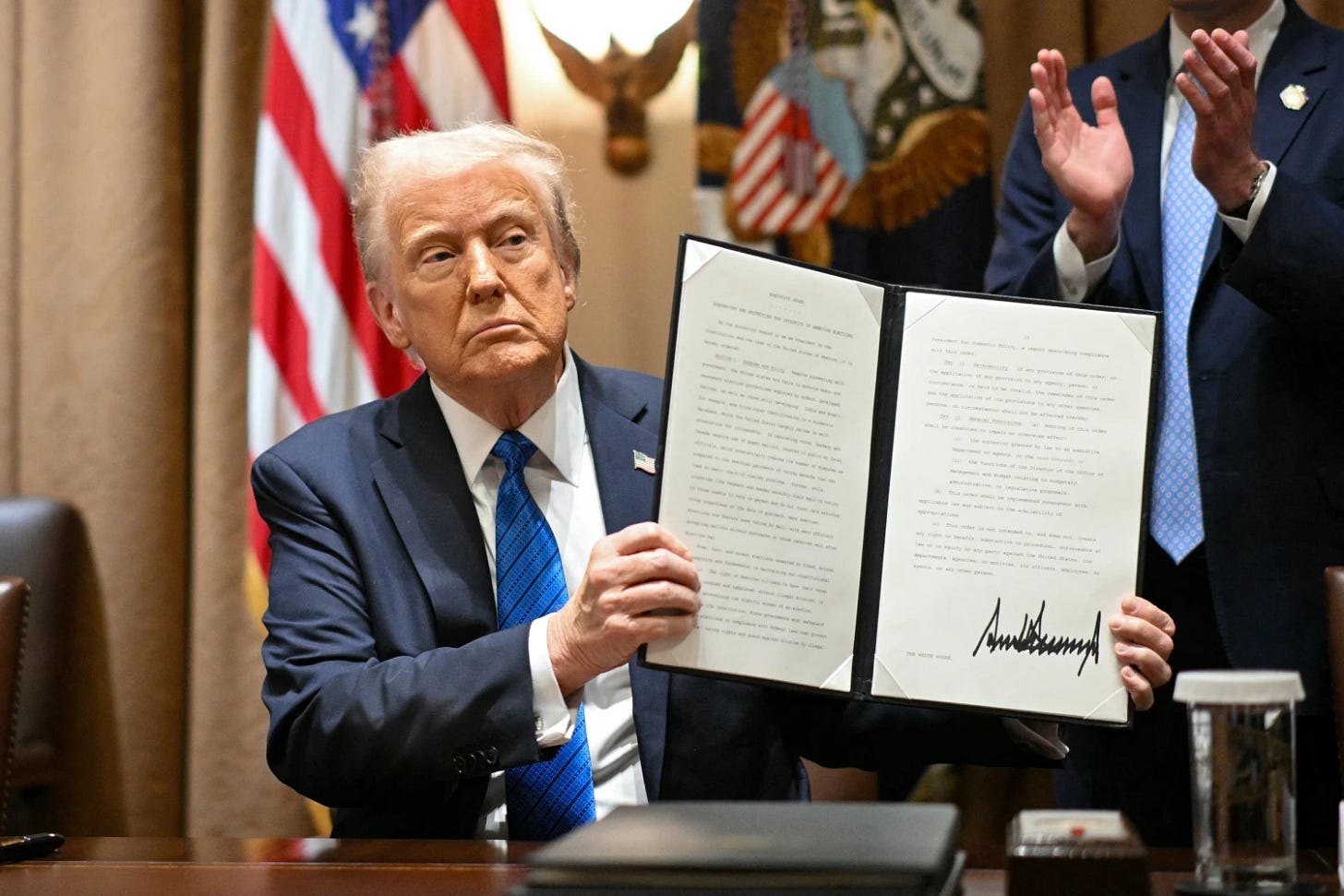Trump’s Tariffs: A Bold Strategy for Trade or a Risky Economic Gamble?
President Donald Trump’s tariff policies have become a cornerstone of his second term, igniting fierce debate over their purpose, outcomes, and potential risks to the U.S. economy. These tariffs, imposed on a range of countries and goods, are presented as a dual-purpose tool: a lever to negotiate better trade deals and a shield to protect American industries and shrink the trade deficit. Yet, they’ve drawn sharp criticism, notably from Tesla CEO Elon Musk, who warns they could spark a recession.
Are these tariffs a necessary step toward fairer trade, or do they threaten economic stability? This article delves into the current tariff landscape, their intended goals, their results so far, Musk’s concerns, and the broader pros and cons—while leaning slightly in favor of the tariffs but critiquing Trump’s tendency to retract them prematurely.
The Tariff Landscape: A Broad and Aggressive Approach
Trump’s tariff strategy has been expansive, targeting major trading partners like China, the European Union, Canada, Mexico, and others. Key examples include the initial 25% tariff on steel and 10% on aluminum—later doubled to 50% for steel—aimed at reviving domestic production. More recently, tariffs on China reached as high as 145% before being scaled back, while threats of sweeping tariffs on Canada and Mexico loomed large in 2025. These measures reflect Trump’s “America First” agenda, which seeks to bolster U.S. industries and address a trade deficit that he claims costs the nation $1.9 trillion annually.
Purpose: Negotiation, Trade Terms, or Both?
Trump’s tariffs serve a dual role, blending negotiation tactics with a push for better trade terms. On one hand, they’re a bargaining chip, designed to pressure other nations into offering concessions. Trump’s approach often involves imposing steep tariffs, then dialing them back once talks progress.
For instance, he threatened Canada and Mexico with tariffs but paused them after securing agreements on immigration and fentanyl control—though these weren’t comprehensive trade deals. Similarly, with China, tariffs soared to 145% before dropping to 30% in a May 2025 agreement, showcasing his dealmaking style: start big, then negotiate down.
On the other hand, the tariffs aim to protect American industries and jobs from what Trump calls “unfair” trade practices—like China’s alleged currency manipulation and intellectual property theft. The steel and aluminum tariffs, for example, were meant to counter cheap imports that have eroded domestic production.
This protectionist streak aligns with Trump’s goal of reducing the trade deficit and rebuilding U.S. manufacturing. In short, the tariffs are both a negotiation tool and a long-term strategy for better trade terms—a two-pronged effort rooted in his business-honed playbook.
Current Results: Wins, Losses, and Trade War
The tariffs have produced a mixed bag of outcomes. On the positive side, they’ve driven some countries to negotiate. The U.S.-China deal in May 2025 lowered tariffs by 115% (leaving a 10% rate on some goods), a move Trump touted as a “historic win” for rebalancing trade. Vietnam, meanwhile, cut tariffs on U.S. goods and greenlit Elon Musk’s Starlink under tariff pressure. These successes suggest the strategy can yield tangible results.
Yet, the tariffs have also sparked a global trade war. Retaliatory measures from affected nations have hit U.S. exports, and financial markets have recoiled. In April 2025, the S&P 500 dropped 6% in a day after new tariff announcements, with the Dow and Nasdaq following suit.
Businesses tied to global supply chains—like Apple, which saw stock declines amid rising costs—have struggled. Consumers, too, face higher prices, with estimates pegging annual household cost increases at $1,000.
Still, the administration insists the short-term pain is worth it. Domestic industries, such as steelmaker Nucor, have seen profit boosts, and Trump argues that enduring trade deficits are unsustainable. The results are thus a trade-off: immediate turbulence for potential long-term gains.
Musk’s Recession Warning: Real Risk or Overblown Fear?
Elon Musk, a key Trump adviser, has emerged as a vocal tariff critic, warning in X posts that they could trigger a recession by late 2025. He’s clashed with trade adviser Peter Navarro, calling him a “moron,” and highlighted risks to Tesla and other firms reliant on global markets. Musk’s logic is sound: tariffs raise costs, disrupt supply chains, and could dampen demand, potentially stalling growth.
But is this fear justified? The U.S. economy remains robust, with low unemployment and solid consumer spending offering a buffer. Trump’s team, including economist Stephen Miran, counters that tariffs will boost revenue and domestic production, dismissing recession fears.
Miran even suggests the “optimal tariff rate” exceeds current levels, implying resilience. Still, Musk isn’t alone—JPMorgan’s Jamie Dimon and investor Bill Ackman echo his concerns, with Dimon labeling the policy “reckless.” While a recession isn’t guaranteed, the risk isn’t trivial, especially if trade tensions escalate.
The Case for Tariffs: A Path To Fair Trade
Despite the risks, there’s a strong case for tariffs. The U.S. has long grappled with trade imbalances—particularly with China, whose practices have undercut American firms. Tariffs offer a counterweight, protecting industries like steel and aluminum, which have seen a revival.
They’ve also forced negotiations, as seen with China, South Korea, and Japan, nudging the world toward fairer trade. For a nation losing billions annually to deficits, this is a proactive step to reclaim economic leverage. The short-term costs pale against the potential for a more balanced global system—a view that tips the scales slightly in favor of the policy.
A Flaw: Retracting Tariffs Too Soon
However, Trump’s strategy isn’t flawless. A recurring critique—even from supporters—is his habit of retracting tariffs before locking in solid deals. Take Canada and Mexico: after imposing tariffs, he paused them based on vague promises about immigration and drugs, not trade reforms.
With China, he slashed tariffs from 145% to 30% in 2025, but some argue he could’ve extracted more. This pattern risks signaling weakness, undermining his leverage. To maximize the tariffs’ impact, Trump must hold firm longer, ensuring concessions are substantial and lasting—not just quick wins.
A Calculated Risk Worth Taking?
Trump’s tariffs are a high-wire act, balancing bold ambition against economic uncertainty. They’ve notched wins—reviving industries, spurring deals—while igniting a trade war and stoking recession fears.
Musk’s warnings carry weight, but the U.S. economy’s strength and the need for fair trade bolster the case for pressing forward. The real challenge lies in execution: retracting tariffs too hastily could squander gains. If Trump can refine his approach—standing tougher in negotiations—these tariffs might just reshape trade in America’s favor. For now, it’s a gamble with high stakes and no certain outcome, but one that leans toward potential reward over ruin.





